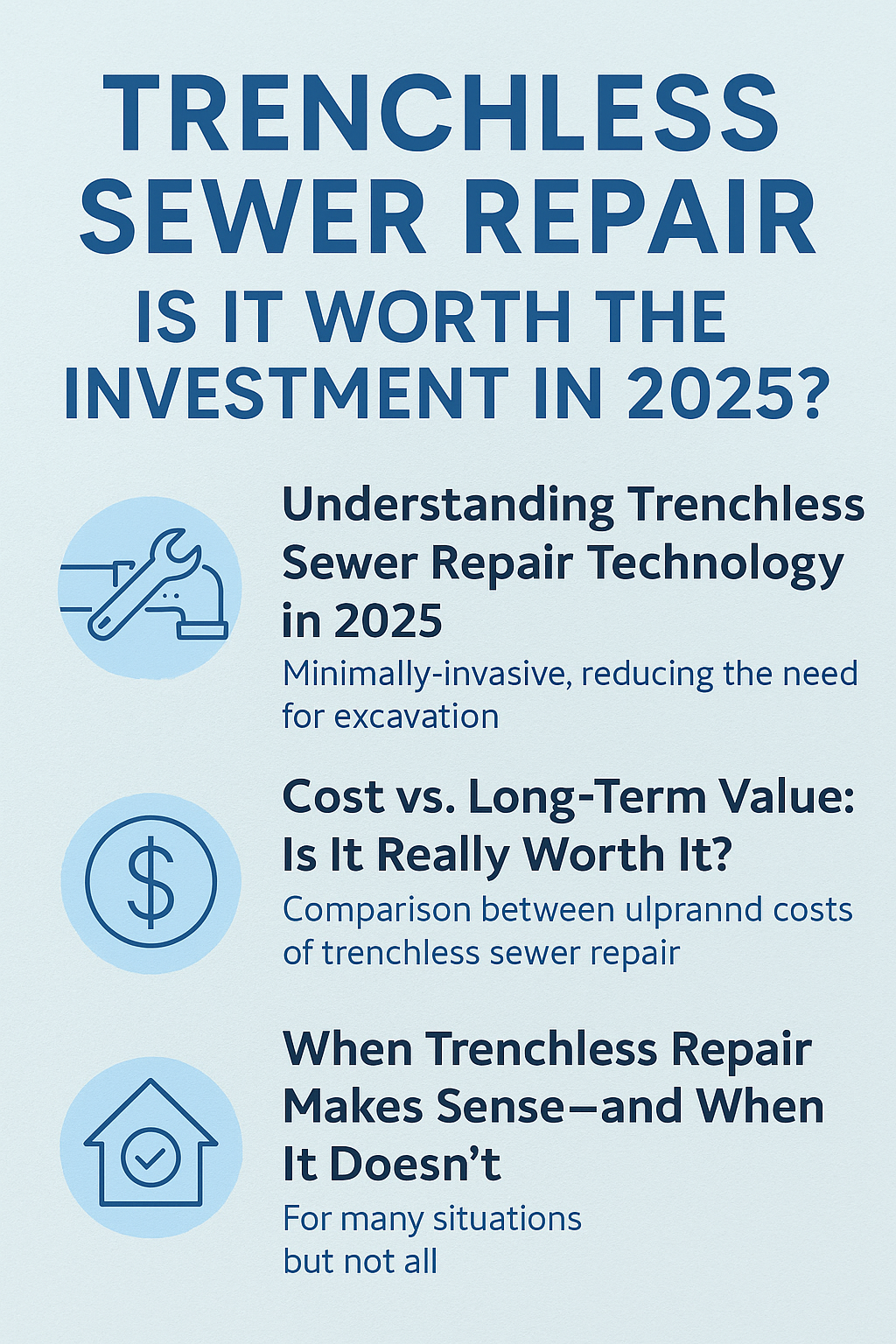- Serving Our NJ Neighbors 24/7 (888) 333-2422
Understanding Trenchless Sewer Repair Technology in 2025

Trenchless sewer repair, once considered cutting-edge, has become the go-to solution for homeowners and commercial property owners looking for efficient, minimally invasive plumbing solutions in 2025. Unlike traditional sewer repair methods that require extensive excavation, trenchless technology allows technicians to repair or replace sewer lines without digging up large sections of a lawn, driveway, or landscaping. The most common types of trenchless methods include pipe lining (CIPP—Cured-In-Place Pipe) and pipe bursting. These solutions are ideal for fixing cracked, collapsed, or root-infested sewer lines while preserving the structural integrity of your property. As the demand for smarter infrastructure solutions continues to rise, trenchless methods have been increasingly adopted by municipalities and local plumbing professionals alike. In 2025, these systems have advanced even further with better materials, improved robotic precision, and faster curing techniques that cut project time nearly in half compared to just five years ago.
Cost vs. Long-Term Value: Is It Really Worth It?
When evaluating whether trenchless sewer repair is worth the investment in 2025, it’s essential to look beyond the upfront cost. Traditional sewer replacement can range between $6,000 to $15,000 depending on the depth and location of the pipe, and often incurs additional landscaping repair costs. Trenchless sewer repair may fall within a similar range, but typically avoids collateral damage—preserving your driveway, yard, sidewalk, or patio. In many cases, homeowners save thousands in restoration expenses alone. What’s more, trenchless repairs often come with extended warranties (10-50 years), thanks to the durable epoxy resins used in CIPP and the strength of HDPE pipe bursting materials. The technology has matured to the point where it’s no longer considered a luxury, but a smart, long-term investment. In a world increasingly focused on sustainability and efficiency, trenchless repairs reduce waste, avoid large equipment emissions, and minimize water system disruptions. Especially in older neighborhoods with aging clay or cast-iron systems, trenchless repairs add resale value and peace of mind, making the cost more justifiable than ever.
When Trenchless Repair Makes Sense—and When It Doesn’t
While trenchless sewer repair is an excellent option for many homeowners, it’s not a one-size-fits-all solution. In 2025, property assessments are more advanced, with sewer camera inspections and 3D pipe mapping giving technicians a clear understanding of whether trenchless methods are viable. If the pipe is severely collapsed or disjointed, traditional excavation might still be necessary. That said, for most cases involving cracks, leaks, tree root intrusion, or corrosion, trenchless solutions are faster, cleaner, and more future-proof. For property managers and commercial clients, the minimal downtime and disruption are especially appealing, reducing potential business losses. Likewise, homeowners appreciate the convenience—most trenchless jobs are completed within one to two days, with no heavy equipment tearing up their property. If you’re dealing with recurring sewer issues and want a long-term, eco-friendly, and minimally invasive solution, trenchless sewer repair is not only worth the investment—it’s a strategic upgrade to your home’s infrastructure that can pay off in both comfort and cost-savings.





